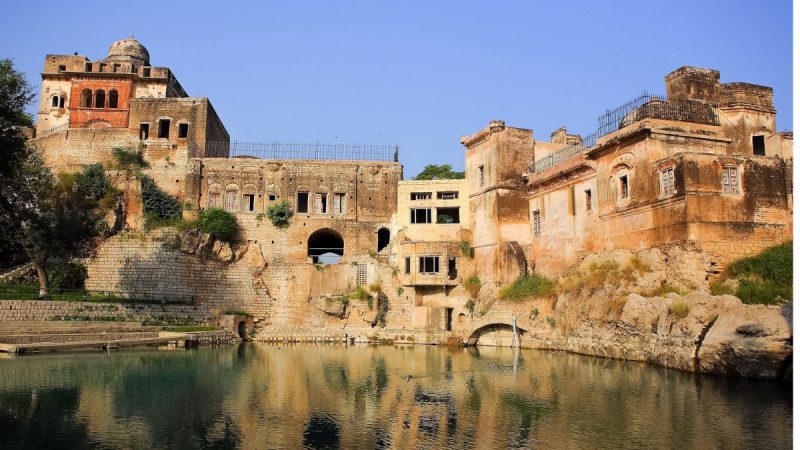Nestled in Pakistan, lies a sacred site steeped in history and spirituality—the Katas Raj Temples. This cluster of ancient Hindu temples holds significant religious and cultural importance. One of Lord Shiva’s tears fell at a location that is now in the Pakistani province of Punjab while he was walking the Earth in a state of frantic grief holding the body of his beloved wife Sati in his arms.
The Katas Raj Temples
Shri Katas Raj Mandir Amazingly Beautiful But Neglected Hindu Mandir In Pakistan..
Jai Shree Ram 🙏💐@LostTemple7 pic.twitter.com/bICAgnWWHt— Harsha Patel 🇮🇳 (@harshagujaratan) July 15, 2021
According to Hindu mythology, these temples are believed to have been built around a pond formed from the tears of Lord Shiva, grieving the loss of his beloved wife, Sati. This legend adds an ethereal aura to the surroundings. The Pandavas are said to have spent some of their exile at the Katas Raj Lake, where the legendary Yaksha is said to have asked Yudhisthira 126 “Yaksha Prashnas”—questions meant to test his integrity and intelligence. They claim that this is the location where Krishna created a temple devoted to Lord Shiva by hand.
Over the years, Pakistan has allowed pilgrims from India restricted access to the Katas Raj temple complex twice a year. For Maha Shivratri this year, 112 visas have been granted. The pilgrimage is planned between March 6 and 12.
For Indian pilgrims, Mahashivratri holds a special allure at the Katas Raj Temples. Every year, thousands of devotees from India pilgrimage to this sacred site, seeking to immerse themselves in the divine atmosphere and partake in the traditional festivities.
How The Temple Came Into Being
Katas Raj Mandir, is a complex of Hindu temples dedicated to Ram, Hanuman & Shiva is laid around a natural pond.
The temple's pond is said in the Puranas to have been created from the teardrops of Shiva, after he wandered the Earth inconsolable after the death of his wife Sati. pic.twitter.com/RCxAEV6rwa— मुकुल यादव (यदुवंशी)🇮🇳 (@Yadavji_) July 19, 2021
The architectural splendour of the Katas Raj Temples is awe-inspiring. The complex comprises several shrines, each reflecting a blend of Hindu and Mughal architectural styles. The grandeur of the temples is adorned with ornate domes. Despite popular belief, the shrines’ exact archaeological chronology is unknown; estimations range from 66 BCE to the 7th century CE. A Buddhist stupa is also mentioned in historical chronicles, though the exact date is unknown.
Many Hindu places of worship that ended up in Pakistan after India was divided underwent varied degrees of neglect. Among them was the Katas Raj temple complex. As time went by, the area’s industrial activity increased and threatened the Katas Raj lake. Despite facing the ravages of time and neglect, these ancient monuments continue to inspire awe and reverence, beckoning visitors from far and wide.
So, have you visited this temple?
Cover image credits: Wikimedia Commons
First Published: March 08, 2024 1:33 PM




